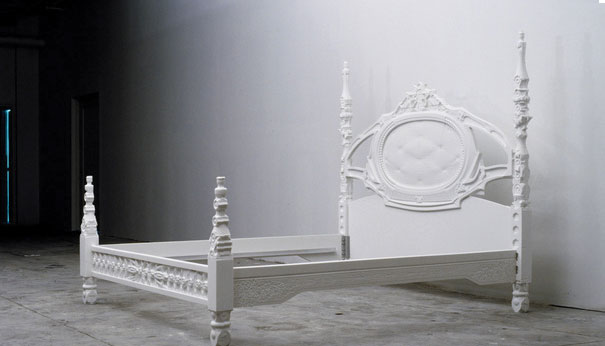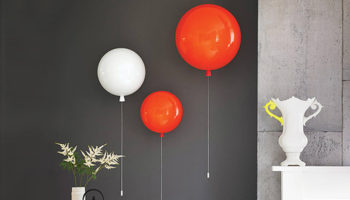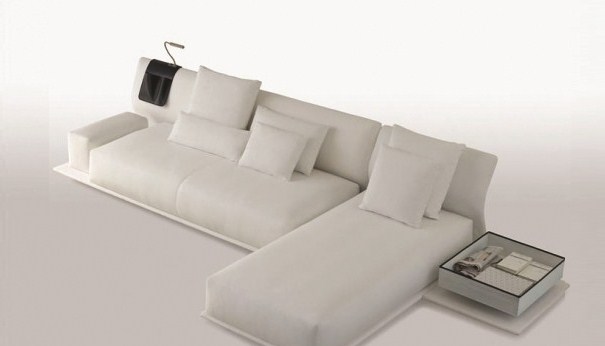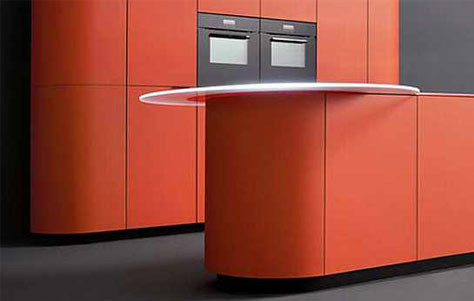Widow of a King: Machine Histories Reinvents Ornament
The nature of production has been a constant source of philosophizing. It drove the Arts and Crafts Movement to champion traditional craftsmanship over soulless mass production; conversely, it drove contemporary designers like Gaetano Pesce to promote mass production over elitist limited editions. Now, the Los Angeles-based pair of Steven Joyner and Jason Pilarski is ringing in on the topic. Founders of Machine Histories, otherwise known as “a messy cascade of independent events,” the dynamic duo privileges “process and production.”
Widow of a King Bedframe. Designed by Machine Histories for Pae White.
Like many Fantastic writers of the late nineteenth and early twentieth centuries—de Nerval, Hoffmann, Gogol, Calvino—Machine Histories wants to disrupt the ordinary and turn it into the extraordinary: they believe “in the potential of ordinary things (such as cabinets, hair picks, and beds) to confound categorization.” But instead of making this metamorphosis depend on singular, artistic re-envisioning, they rely on machines to alter the quotidian into the spectacular. They state their aim quite poetically: “We appropriate and re-appropriate systematic operations to transform the means in the pursuit of novelty, ingenuity, and response. This methodology is applied to a collection of machines, software and building techniques. Embedding the look of anomaly or error (such as extraneous tool marks and forced programming glitches) on the finished object announces the signature of production becoming the agent of decoration and thus the history of said machine. These embellishments communicate a new story to the observer about the design process, where the machine has the ability to yield a type of sentimentality.” I believe this is their collective cry to any remaining luddites.


Despite their wish to avoid categorization, I must have a name for what they do—and part of their repertoire involves making furniture. Of the furniture, Machine Histories’ solid surface bed takes the cake (a purposeful idiom, given that the piece resembles a wedding cake). Their Widow of a King Bedframe, designed for Pae White (whose very name reinforces the entire wedding cake metaphor), takes the idea of an ornate bedframe to a new level by using an unexpected material (and, by extension, an unexpected process). The bedframe is carved out of a white solid surface (I believe it’s Corian but don’t quote me on that) and joined with aluminum braces. Troubled by layers of rococo ornamentation, the Widow of a King Bedframe incorporates floral motifs and dendritic embellishments—even a “tufted” headboard. But all that carving is the work of a machine instead of a pair of hands (or two pairs, for that matter). The construction and material force the decorations to be uniform to such a degree that the furniture becomes a critique of ornament (see the edges especially). The icing on the cake seems to be the product of an invisible hand. Widow of a King Bedframe has its cake and eats it too: the way the piece uses embellishment to dispute embellishment is a mechanical sleight of hand.




Leave a Reply